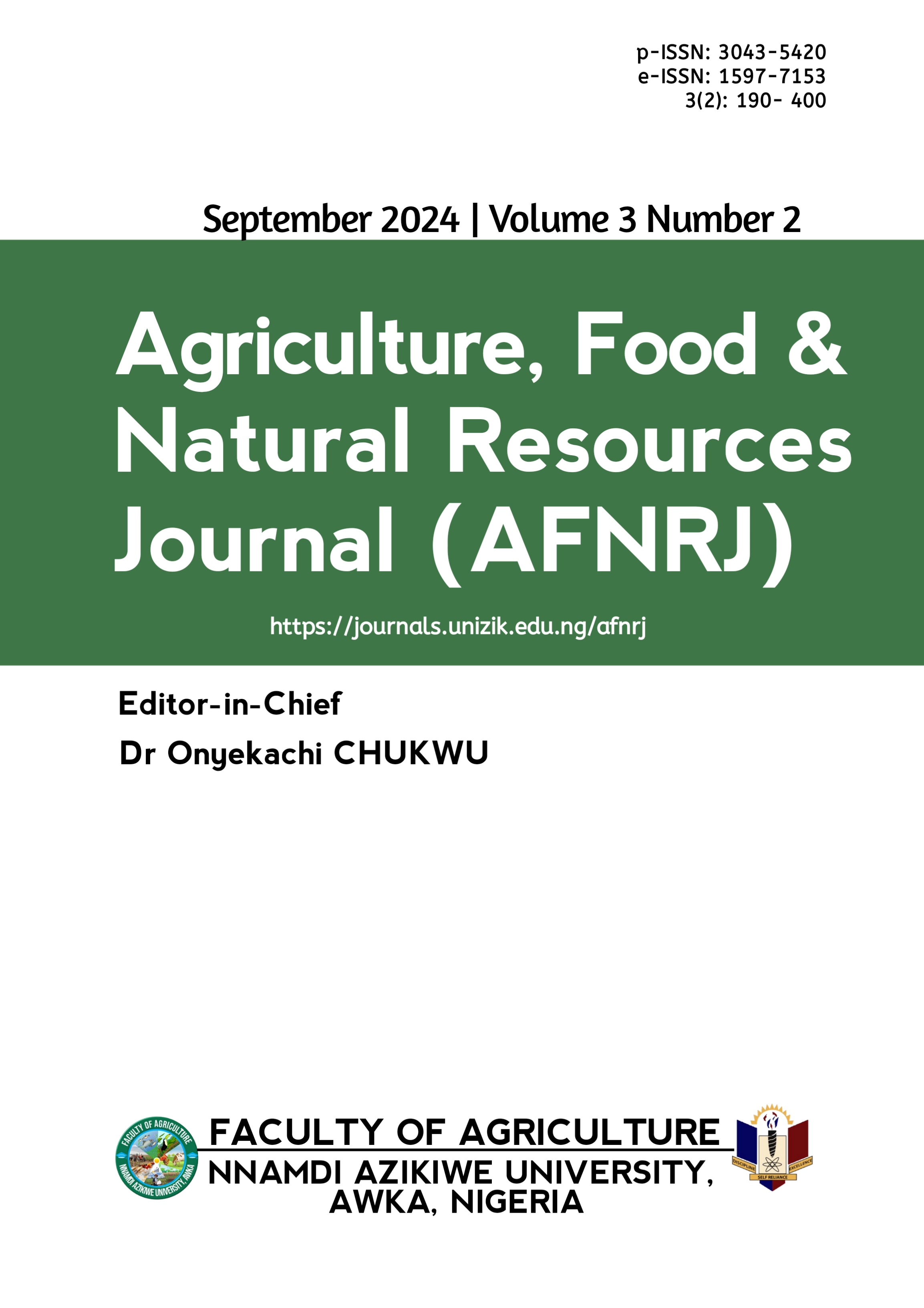Biological properties of basil plant oil and its antimicrobial activity: A review
DOI:
https://doi.org/10.5281/zenodo.14427670Keywords:
Essential oils, Eugenol, Health benefits, PhytochemicalsAbstract
Basil (Ocimum basilicum Lamiaceae and Ocimum gratissimum Lamiaceae), known for their culinary and aromatic qualities;are gaining recognition for their wide-ranging biological properties, especially their antimicrobial capabilities. This study critically reviewed the phytochemical profile of basil oils and their biological effects, with a particular focus on antimicrobial activity. Numerous studies indicate that basil essential oils are abundant in bioactive compounds, primarily eugenol, linalool, and various phenolic substances, which enhance their strong antimicrobial effectiveness against a diverse array of pathogenic micro-organisms. The review considers the potential uses of basil oils in food preservation, highlighting their antioxidant and antimicrobial properties, which can prolong shelf life and improve food safety. Additionally, the therapeutic potential of basil oils in both traditional and contemporary medicine is examined, including their roles in complementary health approaches and as natural alternatives to synthetic antimicrobials. Despite these encouraging findings, the review points out existing gaps in the research, such as the need for standardized extraction techniques, detailed toxicity evaluations by integrating the current literature and outlining future research avenues, this paper seeks to enhance the understanding of basil's biological properties and encourage its application in health, nutrition, and sustainable agricultural practices.
Downloads
Published
Issue
Section
License
Copyright (c) 2024 Victor Bamidele SIMPSON, Ahmed Saliu YUSUF, Opeyemi Adebola ADELEYE, Jadesola Oyinloluwa OLUSOLA

This work is licensed under a Creative Commons Attribution 4.0 International License.
which permits unrestricted use, distribution, and reproduction in any medium, provided the original author and source are credited.
Authors retain the copyright of their published work in the AFNRJ.





